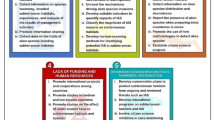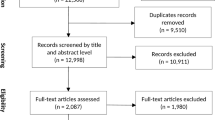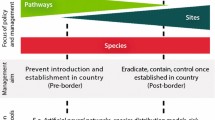Abstract
India, a megadiverse tropical country is grappling with the issue of biological invasions. As a signatory to the Convention on Biological Diversity, India is committed for managing its major biological invasions by 2020. Lack of prioritization of invasive species for control and management is the biggest hurdle for achieving this commitment. We reviewed 21 High Concern Invasive Species (HiCIS) across four major ecosystems (terrestrial mainland, island, freshwater, and marine) in India, utilizing the prioritization framework for understanding the existing knowledge and gaps. We reviewed the existing peer-reviewed and grey literature on HiCIS for information on their ecology, impacts, and management. Prioritization framework provided “priority scores” and “confidence scores” to each HiCIS, where priority score comprised of the species’ ecology and its management lacunae. Confidence score represented the reliability of the priority score. We found that invasions on terrestrial mainland ecosystem in India are the most studied invasions followed by freshwater, island, and marine ecosystem. Priority score of a given HiCIS was positively correlated with its impacts on biodiversity (R = 0.63), physical environment (R = 0.70), and ecosystem services (R = 0.60). This correlation supports scientific focus on deleterious species. The study also indicates policies and guidelines in place for management of invasions as a part of a larger scheme or Legal Act, resulting in their obscurity to the managers, and hindering management of HiCIS. This quantitative synthesis provides a model framework for countries struggling with channelizing management efforts to an overwhelmingly large number of invasive species.


Similar content being viewed by others
References
Ali R, Pelkey N (2013) Satellite images indicate vegetation degradation due to invasive herbivores in the Andaman Islands. Curr Sci 105:209–214
Bebber DP, Gurr SJ (2015) Crop-destroying fungal and oomycete pathogens challenge food security. Fungal Genet Biol 74:62–64. https://doi.org/10.1016/j.fgb.2014.10.012
Bhagwat SA, Breman E, Thekaekara T et al (2012) A battle lost? Report on two centuries of invasion and management of Lantana camara L. in Australia, India and South Africa. PLoS One 7:e32407. https://doi.org/10.1371/journal.pone.0032407
Brunel S, Branquart E, Fried G et al (2010) The EPPO prioritization process for invasive alien plants. EPPO Bull 40:407–422. https://doi.org/10.1111/j.1365-2338.2010.02423.x
Clavero M, Garcia-Berthou E (2006) Homogenization dynamics and introduction routes of invasive freshwater fish in the Iberian Peninsula. Ecol Appl 16:2313–2324. https://doi.org/10.1890/1051-0761(2006)016[2313:HDAIRO]2.0.CO;2
Early R, Bradley BA, Dukes JS et al (2016) (2016) global threats from invasive alien species in the twenty-first century and national response capacities. Nat Commun 7:1–9. https://doi.org/10.1038/ncomms12485
Ellis EC (2011) Anthropogenic transformation of the terrestrial biosphere. Philos Trans R Soc Lond Math Phys Eng Sci 369:1010–1035. https://doi.org/10.1098/rsta.2010.0331
Forsyth GG, Le Maitre DC, O’farrell PJ, Van Wilgen BW (2012) The prioritisation of invasive alien plant control projects using a multi-criteria decision model informed by stakeholder input and spatial data. J Environ Manag 103:51–57. https://doi.org/10.1016/j.jenvman.2012.01.034
Kannan R, Shackleton CM, Uma Shaanker R (2013) Playing with the forest: invasive alien plants, policy and protected areas in India. Curr Sci 104:1159–1165
Kaushik M, Mungi NA (2015) Human–wildlife interactions and management of invasive alien species. Curr Sci 108:1039
Koehn JD (2004) Carp (Cyprinus carpio) as a powerful invader in Australian waterways. Freshw Biol 49:882–894. https://doi.org/10.1111/j.1365-2427.2004.01232.x
Kumschick S, Bacher S, Dawson W et al (2012) A conceptual framework for prioritization of invasive alien species for management according to their impact. NeoBiota 15:69. https://doi.org/10.3897/neobiota.15.3323
Lach D, List P, Steel B, Shindler B (2003) Advocacy and credibility of ecological scientists in resource decisionmaking: a regional study. BioScience 53:170–178. https://doi.org/10.1641/0006-3568(2003)053[0170:AACOES]2.0.CO;2
Liu S, Proctor W, Cook D (2010) Using an integrated fuzzy set and deliberative multi-criteria evaluation approach to facilitate decision-making in invasive species management. Ecol Econ 69:2374–2382. https://doi.org/10.1016/j.ecolecon.2010.07.004
Lowe S, Browne M, Boudjelas S, De Poorter M (2000) 100 of the World’s Worst Invasive Alien Species A selection from the Global Invasive Species Database. The Invasive Species Specialist Group (ISSG) a specialist group of the Species Survival Commission (SSC) of the World Conservation Union (IUCN), New Zealand, 12pp
Mallon CA, Poly F, Le Roux X et al (2015) Resource pulses can alleviate the biodiversity–invasion relationship in soil microbial communities. Ecology 96:915–926. https://doi.org/10.1890/14-1001.1
Marris E (2006) Should conservation biologists push policies? Nature 442:13. https://doi.org/10.1038/442013a
Mathur VB, Kaushik M, Bist SS, et al (2015) Management of human-wildlife interaction and invasive alien species in India. Report no. TR 2015/004, Wildlife Institute of India, Dehradun
McGeoch MA, Butchart SHM, Spear D et al (2010) Global indicators of biological invasion: species numbers, biodiversity impact and policy responses. Divers Distrib 16:95–108. https://doi.org/10.1111/j.1472-4642.2009.00633.x
Morse LE, Randall JM, Benton N et al (2004) An invasive species assessment protocol: evaluating non-native plants for their impact on biodiversity, version. NatureServe, Arlington, Virginia, p 1
Mungi NA, Qureshi Q (2018) On the history, politics and science of invasion ecology. DIALOGUE: science, scientists, and Society 1:1–16. https://doi.org/10.29195/DSSS.01.01.0009
Mungi NA, Coops NC, Ramesh K, Rawat GS (2018) How global climate change and regional disturbance can expand the invasion risk? Case study of Lantana camara invasion in the Himalaya. Biol Invasions 20:1849–1863. https://doi.org/10.1007/s10530-018-1666-7
Nel JL, Richardson DM, Rouget M et al (2004) A proposed classification of invasive alien plant species in South Africa: towards prioritizing species and areas for management action: working for water. South Afr J Sci 100:53–64
Pande HK, Arora S (2015) India fifth national report to convention on biological diversity. Ministry of Environment and Forests and climate change. Government of India, New Delhi
Pimentel D, McNair S, Janecka J et al (2001) Economic and environmental threats of alien plant, animal. and microbe invasions Agric Ecosyst Environ 84:1–20. https://doi.org/10.1016/S0167-8809(00)00178-X
Randall JM, Morse LE, Benton N et al (2008) The invasive species assessment protocol: a tool for creating regional and national lists of invasive nonnative plants that negatively impact biodiversity. Invasive Plant Sci Manag 1:36–49. https://doi.org/10.1614/IPSM-07-020.1
Robertson MP, Villet MH, Fairbanks DHK et al (2003) A proposed prioritization system for the management of invasive alien plants in South Africa: research in action. South Afr J Sci 99:37–43
Sax DF, Gaines SD, Brown JH (2002) Species invasions exceed extinctions on islands worldwide: a comparative study of plants and birds. Am Nat 160:766–766. https://doi.org/10.1086/343877
Simberloff D, Martin JL, Genovesi P et al (2013) Impacts of biological invasions: what’s what and the way forward. Trends Ecol Evol 28:58–66. https://doi.org/10.1016/j.tree.2012.07.013
Theoharides KA, Dukes JS (2007) Plant invasion across space and time: factors affecting nonindigenous species success during four stages of invasion. New Phytol 176:256–273. https://doi.org/10.1111/j.1469-8137.2007.02207.x
Walsh JR, Carpenter SR, Vander Zanden MJ (2016) Invasive species triggers a massive loss of ecosystem services through a trophic cascade. Proc Natl Acad Sci 113:4081–4085. https://doi.org/10.1073/pnas.1600366113
Acknowledgments
Present study is based on the workshop on ‘Management of Human – Wildlife negative interactions and Invasive species’, funded by the Ministry of Environment, Forestry and Climate Change (MoEF&CC) and organized by the Wildlife Institute of India (WII). We thank Dr. V.B. Mathur (WII), Dr. G.S. Rawat (WII), Dr. B.C. Sinha (WII), Dr. Y.V. Jhala (WII), Dr. S. Sathyakumar (WII), Dr. K. Sankar, and Shri. S.S. Bist for facilitating the study and participants of the workshop for giving field inputs. We thank Dr. Hukum Singh (Forest Research Institute) and the anonymous reviewers for improving the manuscript.
Author information
Authors and Affiliations
Corresponding author
Ethics declarations
Conflict of interest
The authors declare that they have no conflict of interest.
Additional information
Publisher’s Note
Springer Nature remains neutral with regard to jurisdictional claims in published maps and institutional affiliations.
Electronic supplementary material
ESM 1
(DOCX 31 kb)
Rights and permissions
About this article
Cite this article
Mungi, N.A., Kaushik, M., Mohanty, N.P. et al. Identifying knowledge gaps in the research and management of invasive species in India. Biologia 74, 623–629 (2019). https://doi.org/10.2478/s11756-018-00186-8
Received:
Accepted:
Published:
Issue Date:
DOI: https://doi.org/10.2478/s11756-018-00186-8




